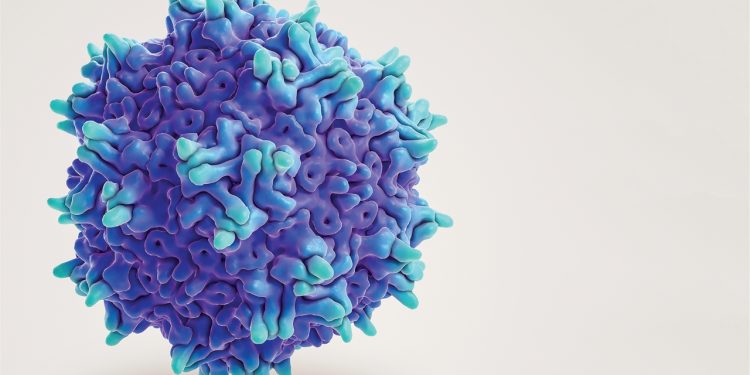Different efforts and commitments have been put in place for a resurgence in gene therapy that is partly fueled by knowing and identifying new gene delivery vectors. When it comes to delivering DNA to deoxyribonucleic acid (DNA) to target cells, researchers can engineer Adeno-Associated Virus (AAV)- a non-enveloped virus that has been getting massive attention from researchers recently, most especially in the aspect of clinical therapeutic strategies. One of the safest gene therapies is the ability to generate recombinant AAV. This addgene guide AAV will reveal all you need to know about AVV.
Understanding AAV gene therapy
We all know the human body has some blueprints and these are genes. They give commands to the cells in the body for making proteins critical to how they work. Faulty expression of proteins is responsible for a couple of both known and not too known diseases and these happen when there is protein expression from an impure or absent gene. It can also be by environmental protein or gene changes.
For the delivery of therapeutic genes to cells or tissues, gene therapy employs changed viruses or other technologies in addressing the source of gene-related diseases. Researchers can deliver genetic materials into living tissues with the use of the Adeno-Associated Virus which remain an effective delivery system.
What is an Adeno-Associated Virus (AAV)?
Adeno-Associated is small viruses infecting humans as well as some primate species. Belonging to the genus Dependoparvovirus, they can belong to the Parvoviridae family. Usually, they are not small (20 nm) replication-defective, nonenveloped viruses and have linear single-stranded DNA (ssDNA) genomes of about 4.8 kilobases. At the moment these viruses are free from causing any kind of disease but cause a very mild immune response. Thanks to their wide range of features they make a better option for creating viral vectors for gene therapy as well as creating isogenic human disease models.
Both dividing and quiescent cells are not free from being infected by gene AVV-gene therapy vectors and continue in a state of the extra chromosome and do not integrate into the host cells' genome. Virally carried gene integration into the host genome takes place. However, certain applications can find integration beneficial and at the same time, the outcomes may not be pleasant. Researchers have seen from recent human clinical trials that the use of AAV production for gene therapy in the retina is promising.
How does AAV work?
To understand this, Adeno-Associated viruses work by undergoing a transformation process from a naturally-occurring virus into a mechanism that delivers gene therapy. New DNA replaces the viral DNA, becoming a precisely coded vector and not anymore a virus as there has been the replacement of almost all the viral parts. Adeno-Associated virus is then used in delivering normal gene copies to the right body tissues or organs, delivering the channeled therapy.
As of now, AVV technology is on a whole new level as it targets a wide range of body tissues and cells to treat diseases relating to genetics. Researchers can put two copies of genes into a single vector, however, not with all diseases. These vectors are referred to as self-complementary AAV packaging services.
Adeno-Associated Virus and its research benefits
Researchers have built massive interests in AAV for gene therapy as a result of its advantages. The most important among these advantages is the pathogenicity absence. In human chromosomes, Adeno-Associated Virus can also infect non-dividing cells as well as stably integrate into the host genome at a particular site. As a result, this feature makes it easier to forecast AAV than retroviruses which pose a threat to insertion and mutagenesis, and in some cases, cancer development can follow it. Most frequently, there is the integration of AAV into the mentioned site, while there is an occurrence of random incorporations into the genome with a negligible frequency. The integrative capacity by rep and cap vector from the vector's DNA has been removed by AVVs gene therapy vectors. The desired gene, coupled with a promoter for driving gene transcription is placed between the inverted terminal rrepeats (ITRs) that aid in concatemer formation in the nucleus after the single-stranded vector
Researchers derive many benefits from using AVV as their therapeutic gene delivery primary means. This is because it doesn't use any human disease. At the same time, it requires outside help to function actively and effectively to avoid replicating in the body as is common with other viruses. As a result, researchers enjoy the benefit of having precise control on how much AAV will be given using AAV production and purification.
Advantages of Adeno-Associated Virus
Adeno-Associated Virus comes with lots of advantages to help researchers achieve the best research outcome. Some of the advantages are
- It does not host inflammatory reactions to capsid components
- It is non-immunogenic (it has no viral coding sequences)
- It is persistent in long-term DNA cell target
- It has efficient DNA entry into a target cell
Disadvantages of Adeno-Associated Virus
Despite the wide range of advantages associated with AAV packaging system, it also comes with some disadvantages that may affect the outcome of research work. These include
- Integration and expression decline in time as a result of episomal loss by degradation
- Small package capabilities
- A strong cell-mediated response to immune
- Lower titers
Conclusion
Adeno-Associated plays a vital role in preventing some diseases, and at the same time, it doesn't cause any disease itself. They are applicable in a wide range of clinical aspect and makes research work easier overall.
























